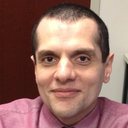Treatment options for parasomnias.
关键词
抽象
Parasomnias are undesirable physical or experiential events that occur in and around sleep. Treatments include reassurance in some cases, various forms of cognitive-behavioral therapy (CBT), and pharmacologic agents. Cognitive restructuring, imagery rehearsal, relaxation, hypnosis, desensitization, and anticipatory awakenings are some of the common CBT and nonpharmacologic interventions. Medications that are used belong to a wide variety of pharmacologic classes, such as alpha-blockers (prazosin), tricyclic antidepressants (imipramine and clomipramine), selective serotonin reuptake inhibitors, benzodiazepines (diazepam and clonazepam), anticonvulsants (topiramate and gabapentin), desmopressin acetate, and anticholinergic agents (oxybutynin and tolterodine). Data on efficacy are only available from randomized trials on CBT and prazosin for nightmares and on pharmacologic and alarm therapy for enuresis. No large-scale randomized trials are available to assess the efficacy of the other treatments, and most data come from anecdotal case reports, case series, or small open-label trials.


